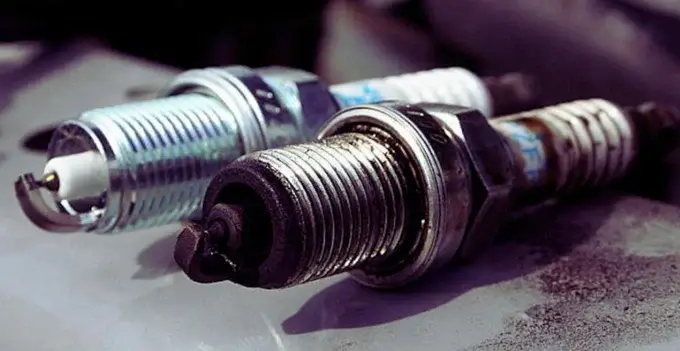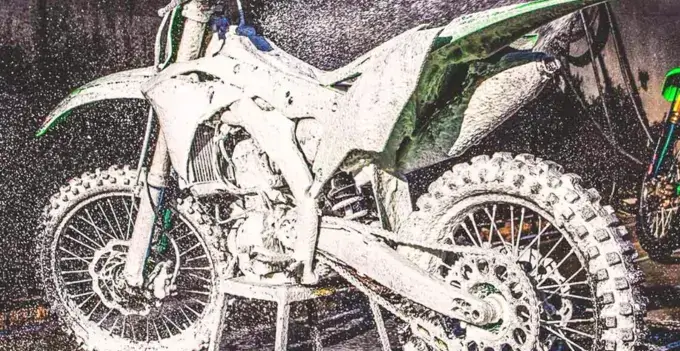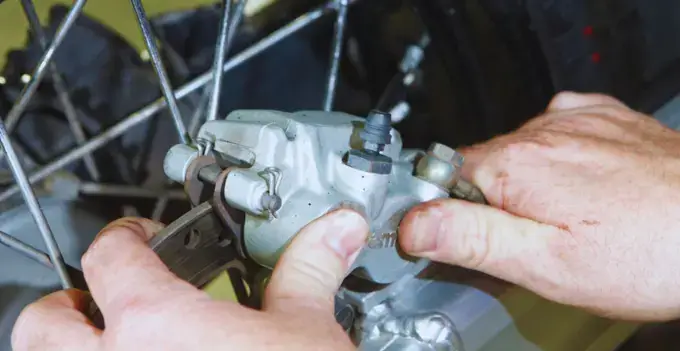Dirt bikes are a great way to have fun and get some exercise. A dirt bike tears across rugged terrain, leaving dust clouds. Suppose your dirt bike has been sitting idle for a while, whether due to a long winter break or a prolonged rest; starting it up again may seem daunting.
Fortunately, restoring a dirt bike that has been sitting dormant is manageable work. You can breathe life back into your two-wheeled companion with patience and know-how.
It can also be helpful to buy a dirt bike that has been sitting in someone’s garage for years and needs maintenance to get it racing again.
Briefly, typical long-term dirt bike storage requires fresh oil and filter, an empty gas tank, and left on a stand, among other necessities. In this article, we’ll guide you through a step-by-step process to start a dirt bike that has been sitting idle for an extended period.
Why won’t my Dirt Bike Start after Sitting? Common Reasons
Other than in southern states, people have to Winterize their dirt bikes. That also means they must de-winterize them once Spring rolls around.
Several common reasons could be at play when a dirt bike refuses to start after sitting idle.
Understanding these factors will help you troubleshoot the issue effectively. Here’re some of the most frequent reasons:
1. Dirty Air Filter
If you’ve let your dirt bike sit for a long period, it’s unlikely you remember the last time you changed the oil, air filter, and coolant. Muddy air filters restrict the airflow into the engine, leading to an unduly rich fuel mixture. It can cause starting difficulties or even prevent the engine from firing.

2. Lack of Oxygen
Dirt bikes require a proper air-fuel mixture for combustion, and oxygen is necessary. It’s typically abundant in the surrounding air. However, other factors, such as dirty air filters, blocked or restricted exhaust systems, and carburetor Issues, can cause a lack of oxygen.
3. Poor Fuel
Poor or contaminated fuel can be a primary reason for starting problems with a dirt bike. Over time if it sits inside the system over time, the fuel will become gummy and block the fuel system and engine. Before filling it with fresh fuel, clean the fuel tank by scrapping it. In this way, you’ll get an easy start.
Additionally, moisture can accumulate in the fuel tank, causing further issues. Both scenarios can restrict fuel flow and prevent the engine from starting.
4. Dirty Carburetor
The carburetor mixes air and fuel to create the explosive mixture needed for engine operation. If the bike sits long, the carburetor’s internal components may become clogged with varnish, dirt, or debris. This obstruction can prevent the fuel from reaching the engine and restrict starting.

5. Dead Battery
Not every dirt bike has a battery, but for those who do, a dead battery can be the main reason for not starting. If the dirt bike has been sitting without regular battery maintenance, the battery can discharge.
A weak or dead battery will not have enough power to ignite the engine. It requires recharging or replacement.
6. Faulty Spark Plugs
Spark plugs are essential to ignite the dirt bike’s engine. A deteriorated spark plug can disrupt the ignition process and hinder starting. Over time, spark plugs can accumulate carbon deposits, reducing their effectiveness. Damaged or worn-out spark plug wires can also result in a solid or absent spark, making it easier to ignite the fuel-air mixture.
When a dirt bike sits unused, rusting and backfiring can reduce the life of a spark plug.

7. Less Engine Compression
Compression plays a critical role in starting a dirt bike. Engine compression is the pressure created within the engine’s cylinders during combustion. If the engine has lost compression, it won’t be able to start. Several things, such as worn piston rings or a blown head gasket, can cause it.
Considering these common reasons, you can begin troubleshooting your dirt bike’s starting problem with a targeted approach.
How to Start a Dirt Bike that has Been Sitting? (Step-by-Step Guide)
It’s a bad feeling when your dirt bike won’t start after six months of rest. A dirt bike that has been sitting idle for ten years is in a different condition than a dirt bike that’s been sitting for a few months only. Your dirt bike sits lonesome in a garage for months and stays silent when it’s time to hook up for the next ride.
However, no matter how long a dirt bike has been sitting, here’re the 12 handy steps you need to do to get it started.
1. Wash the Bike
Yes, sometimes, after washing my dirt bike, I sit and stare at it! After a dirt bike has been sitting idle for a while, it’s a good idea to thoroughly wash it before attempting to start it. This helps remove dirt, grime, and any accumulated debris during inactivity.
Your dirt bike still looks new, ignoring the worn paint. The bottom of the bike may be crusty, dirty, or oil-stained. But taking care of it can make it easier to resell in the future.
After washing it, you can easily inspect all the essential components, like any visible damage, leaks, loose connections, or worn-out parts.

2. Clean the Carburetor
If the carburetor is gummed up, it will prevent the engine from starting. Dirt bike carburetors often get dirty from sitting for a couple of months. Even if you want to start the bike, it must be fixed. Over time, fuel deposits, dirt, and debris can accumulate in the carburetor, leading to clogs and affecting the bike’s performance.
The carburetor maintains the air-to-fuel ratio (A/F ratio) to work the engine correctly. Before you hit the road, it’s essential to wash your carburetor with a carb cleaner Sea Foam®. You should pull small screws or jets using the relevant tools. And thoroughly clean them.
Use the spray in the carburetor to remove even little dust from all passages. It may be the cheapest way to fix your dirt bike’s carb.
Note how you should check the carburetor:
- Stay for the bike to get cold
- Check the overflow
- Inspect if liquid comes out
If fuel does not come out, replace or fix the carburetor.
Tip:
Use an Ultrasonic carburetor cleaner, a special liquid having an ultrasonic frequency that washes all the grease and dirt from the bike’s components.
Ultrasonic carburetor cleaner can be expensive but keeps your carb in prime condition.
3. Change Oil
After dormant sitting on a dirt bike, oils, and liquids gather dirt and impurities. Draining the old fuel and putting in new oil is a good idea. You’ll want to pay $12 to change the oil to prevent the lock-up of your engine for the first ride of the season.
4. Change Air Filter
You know dirt is the worst enemy of the engine. Air filters protect the engine by keeping the dirt aya from it. So air filters should be cleaned or replaced after a few rides according to the riding conditions.
This dirt can accumulate in oil filters as well. The 4-stroke engines have oil filters, which should be replaced after every ride. On the other hand, 2-strokes have no oil filters, so one thing is less to be maintained.
Check the air filter for dirt, debris, or clogs. If the air filter appears dirty or clogged, clean or replace air filter following the manufacturer’s instructions. A clean air filter ensures proper airflow into the engine for efficient combustion.
Here’s what you need to do about the filter:
- Buy new filter(s)
- Remove the older
- Clean the spot
- Replace the filter(s)
5. Lubricate Chain & Suspension
The chain is your dirt bike’s most important but least maintained part. It’s highly recommended to clean and lubricate the chain before your trail ride or moto session. A dirty and rusty chain will cause a problem sooner or later. But if the chain is broken from a side, it may cause a lethal accident. Therefore, it’s the simplest task to maintain and lubricate the chain before every ride.
You’ve to grease or lube the bearings, cables, and chains.

6. Check Spark Plug
Next, clean the spark plug with sandpaper and a wire brush until the plug is clean and shiny. This will allow it to produce more spark if it has lost efficiency during hibernation.
A damaged spark plug is the worst problem for long-terrain riders. You’ve to replace your dirt bike’s spark plug once a year. A new spark plus will start the bike much better. When you ride through a humid environment, the plus may become damp. Hence, it no longer produces a spark to ignite the combustion chamber.
However, you can run the bike by pressing the spark plug into the metal and attempting a kickstart. If it operates, you’re golden.
If the kickstart doesn’t work, you’ll have to:
- Inspect or remove the spark plug if needed.
- Look for signs of fouling, corrosion, or wear.
- Replace it with a new one if the plug is damaged.
- Ensure the spark plug wire is securely connected.
Don’t forget to pack spares!
7. Battery Voltage Inspection
The battery is essential in starting a dirt bike after a long time. It is the first source to ignite required to run the engine. A battery not charged for a prolonged time will drain itself completely.
Generally, idle batteries for more than one year can’t perform at all. Use a voltmeter to know whether the battery charging can revive it. But it’s recommended to replace the battery with a new one.
However, if you have been charging the battery periodically, you can re-use it again. If the voltmeter shows a lower value, even after full charge, then go for the battery replacement.
When your dirt bike has a battery, you must:
- Check the charging
- Remove the battery if required.
- Charge it
- Store your battery at room temperature.

8. Oil it Up
A winterized dirt bike that has been sitting for more than six months has a chance of getting rust inside the fuel tank or cylinder. It can be hard on it, and the piston rings on the first start-up. Uncover the spark and pour a little oil into the tank to reduce the chances of failure. Then apply a slow kick to the bike to cover the inside with oil.
9. Drain out the Old Gas
Draining out the old gas from your dirt bike is crucial, especially if the bike has been sitting idle for an extended period. Stale or contaminated fuel can cause starting issues and affect the bike’s overall performance.
If gas has a premix, it will quickly become fouled. So, drain all the gas from the tank and put in some fresh gas. Old gas will cause problems, mainly on higher-performance bikes that require fine carb-tuning.
Your fuel tank may also be empty. If there’s no gas, you need not worry; fill the tank before starting the engine.
10.Wiring and Joints
Treat all electrical components with anti-corrosive sprays. Thoroughly clean the coil and the cable connected to the spark plug. Minister other joints, including saddle hooks, footrests, kick starters, etc., with the same aerosol.
Do you know?
WD-40 Specialist® Corrosion Inhibitor is an anti-rust spray ideal for use in extreme environments such as high humidity.
11. Brakes & Tires Check
The second last step that needs to be considered is the brakes & tires. Falling the tire pressure for a dirt bike sitting for several months is normal.
Typically, a traditional tire has a pressure between 6psi to 18psi. Therefore, checking the tire pressure labeled by the brand’s manufacturers would be best. Most tires of dirt bikes have a pressure of 12 psi.
To check your brakes, place your dirt bike on the base stand and rotate each wheel with your hands. Apply the front brakes while you are spinning the front wheel. Similarly, apply the rear brake while rotating the rear wheel. At last, you need to check the disc pad and disc shoe for wear and tear.
Generally, replacing the entire brake fluid with a fresh one after the long rest of your dirt bike is best.

12. Test Ride
When everything is prepared, it’s time to start the engine and run a test ride. Remember all the mechanical parts of the engine that can cause a disturbance. Letting the bike idle for a few minutes is vital so everything greases and warms up well. Inspect all the lights and indicators for their proper functionality.
Using a kickstart technique, give the brakes and clutch the throttle. The last thing you want is a stuck throttle and no brakes with full-motion kicks.
Once finished, restart your regularly scheduled care intervals.
That’s it. Now you’re ready to roll!
What to do if my Dirt Bike won’t Start?
If you have tried all possible methods, including thoroughly cleaning the carburetor and changing the fuel, but still your bike is not responding to kick start, you may try the push start method.
To push start a dirt bike, follow these steps:
- Find a flat area with enough space.
- Ensure the bike is in neutral and the kill switch is on.
- Push the bike forward with momentum.
- Jump onto the bike and engage the clutch.
- Release the clutch smoothly to spin the engine.
- Maintain balance and control while riding.
- If issues persist, consult a mechanic for further assistance.
With this method, you’ll set the engine into action.
How Long can you let a Dirt Bike Sit?
Dirt bikes can be left idle for varying durations, depending on various factors, including the bike’s condition, the type of fuel you use, and the storage environment.
However, it’s generally recommended only to let a dirt bike sit briefly with proper maintenance.
Dirt bikes should only sit idle for a short time with proper maintenance. Fuel can degrade, oil can deteriorate, batteries can discharge, and corrosion can occur. Regular maintenance and preventive measures are recommended to mitigate these issues.
How to Store a Dirt Bike for Long-Term?
After starting and reviving your dirt bike that has been sitting, you’ll never want to have to go through it again. Luckily here’re several steps to keep your bike from reverting to such a condition.
To store a dirt bike for the long term, you should:
- Clean the bike thoroughly and dry it.
- Add fuel stabilizer or drain the fuel.
- Change the oil and filter.
- Remove and store the battery separately.
- Protect metal surfaces from moisture with a corrosion inhibitor.
- Elevate the tires off the ground by using a stand.
- Apply lubrication to the chain, cables, and pivot points.
- Put a motorcycle cover on it.
- Store in a dry, well-ventilated location away from sunlight and extreme temperatures.
- Perform periodic maintenance checks during storage.
Now, you can safely store your dirt bike for an extended period.
Conclusion
Dirt bikes are fun, but it’s frustrating when they won’t start after sitting for a few months. There’re many reasons why a dirt bike might struggle when you first turn it on. The dirty air filters, bad spark plugs, dead battery, and empty fuel tank are the main reasons that your bike won’t start.
We hope this guided information was helpful! You can locate and fix your dirt bike’s issues with the correct information. After following our guide, you’ll ride your dirt bike on the muddy tracks.
Before taking your bike on the road again, remember to follow our step-by-step guide and information about how to start a dirt bike that has been sitting.
Good luck!
Sharing is caring!
FAQs
How do you start a bike after a long time?
If you want to start a bike after a long time of sitting idle, follow these steps. Check the bike’s condition, ensure a charged battery, and address the fuel system by draining old fuel and adding fresh fuel. Inspect and clean or replace the spark plug and air filter. Prime the engine by turning on the ignition. Follow the bike’s starting procedure. Let the bike idle to warm up, monitoring for any issues. Fine-tune throttle and idle settings as necessary.
How do you force-start a dirt bike that won’t start?
To force-start a dirt bike, you will need to:
- Make sure that the choke is on.
- Put the bike in neutral.
- Kick the engine over with as much force as you can.
- If the engine is still not starting, repeat steps 2 & 3.
Can old fuel prevent my dirt bike from starting?
Yes, old fuel can prevent a dirt bike from starting. Gradually, gasoline can degrade, resulting in the formation of varnish or deposits. These deposits can clog fuel lines, carburetor jets, and injectors, leading to poor fuel flow that prevents the engine from starting. Therefore, using fresh fuel or properly draining the fuel system is essential if the dirt bike sits idle for a long time.
How can you prevent your dirt bike from not starting after sitting?
Here’re the key points on how to prevent your dirt bike from not starting after sitting:
- Check the fluids and filters regularly.
- Clean the carburetor regularly.
- Check the spark plug regularly.
- Prime the engine before starting.
- Start the engine regularly, even if you’re not going to ride.
- Store your dirt bike properly.
Following these tips can prevent it from not starting after sitting.



![Do You Need A License To Drive A Dirt Bike? [Expert Guide] Do You Need A License To Drive A Dirt Bike? [Expert Guide]](https://dirtbikecoach.com/wp-content/uploads/2022/08/What-Is-An-Enduro-Mountain-Bike-211x150.png)



